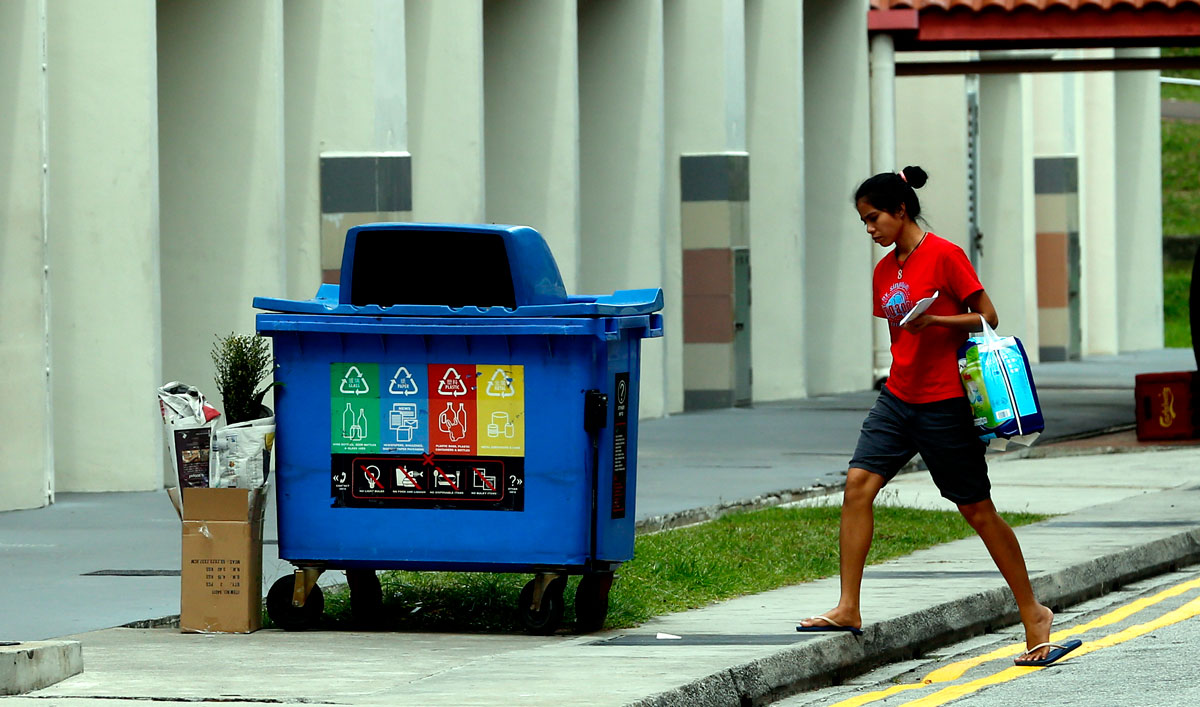Singapore has impressive public waste-management systems, but there’s just one problem – its residents aren’t pulling their weight when it comes to household recycling.
The land-scarce Asian city-state generated about 8,400 tons of solid waste a day in 2015, but has just one offshore landfill space to bury all its trash.
The landfill “island,” called Semakau, was created in 1999 and extended in 2015, with enough space to meet Singapore’s waste disposal needs until at least 2035.
Singapore gets by with so little space for rubbish through an innovative waste management process, in which it recycles about 60 per cent of its solid waste and incinerates 38 per cent of its total waste in waste-to-energy plants.
Just 2 per cent of the non-incinerable solid waste and the ash from the incinerator plants are buried in the landfill.
But this isn’t due to a heroic environmental effort from Singaporeans. Households recycled just 19 per cent of their waste in 2015, down from 22 per cent in 2010.
“The lack of awareness and indifference only partly explains the absence of recycling habits [in Singapore] … In most cases people do not recycle simply because they are not required to do so,” said Tong Yen Wah, co-director of the Energy and Environmental Sustainability Solutions for Megacities programme at the NUS Environmental Research Institute.
Recycling is easy enough in Singapore. There are shared recycling bins at every block on the island’s public housing estates, with a minimum of three weekly collections. Private landed properties have one recycling bin each, with weekly collections.
Read also: People recycling less despite govt measures to encourage it
“It’s really not that difficult for residents to place their recyclables in these bins,” Melissa Tan, chairman of the Waste Management & Recycling Association of Singapore, told CNBC. “What is needed is a mindset change.”
“I personally think Singaporeans have been too pampered by an efficient government…We need to further develop our recycling culture so that Singaporeans make an extra effort to recycle more instead of simply throwing things away,” Tan added.
Aside from the government measures in place to dispose of their rubbish, Singapore has long relied on a network of rag-and-bone men, known as “Karang Guni men,” who go door-to-door in housing estates, paying residents by weight for newspapers, used clothing or electronics waste, which they then sell to specialised markets or junkyards.
Lynn Su-Lin, a recycling advocate and environmentalist, told CNBC the reason she believed recycling hadn’t caught on in Singapore was because of “the lack of social consciousness in thousands of Singaporean families.”
“Singaporeans also have a love affair with plastic bags, always taking new plastic bags because it comes at no extra charge,” Lynn added.
Experts say that Singapore should look to emulate East Asian countries including South Korea and Japan, which have cultivated successful public recycling behaviours through unorthodox measures.
Read also: Sorting out the recycling blues of Singapore
For example, in South Korea it is mandatory for food waste to be separated by households so it can be recycled into animal feed or compost.
There are also high-tech food waste disposal systems that weigh the food waste and charge residents based on the weight of disposed food waste.
The country managed to cut its food waste from 5.1 million tons in 2008 to 4.8 million tons in 2014, official statistics show.
In Southeast Asia, Malaysia has recently focused on recycling, by introducing compulsory waste segregation in June. Penalties for residents who don’t comply include fines of up to 500 Malaysian ringgit ($120).
The NUS Environmental Research Institute’s Tong said the fines in Malaysia for non-recycling offenders were more of a deterrent than any other measure.
But he said implementing penalties in Singapore might not work as well because most residents lived in high-rise buildings with rubbish chutes inside their apartments that led to shared bins, which meant that identifying individual offenders would be difficult.
“What [Singapore] can do instead is to make people pay according to the amount of garbage they produce, known as the pay-as-you-throw or polluters-pay principle,” Tong said, adding that such measures could be combined with a save-as-you-reduce programme, in which people do not pay to have their recyclables collected.
In 2015, the island state launched a blueprint with targets for a more sustainable Singapore. Some of the new measures to encourage household recycling included dual chutes for waste and recycling in new public housing blocks.
Read also: 159,000 tonnes more waste generated







